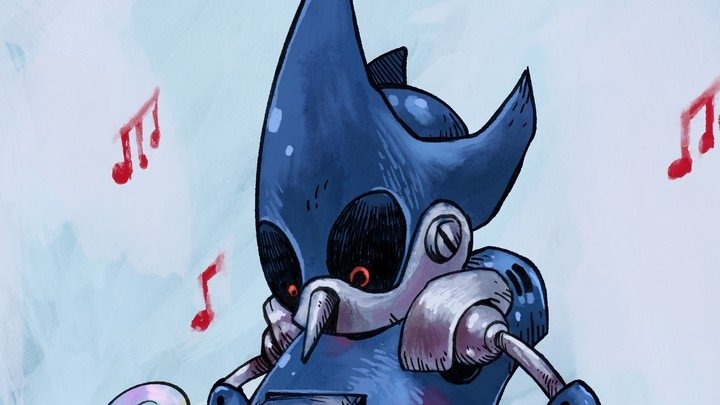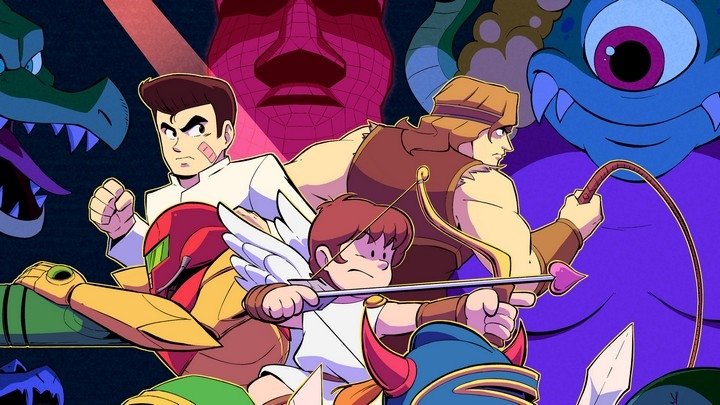Legendary Namco pixel artist and designer Hiroshi 'Mr. Dotman' Ono dies at 64
The 'god of dot art' and decades-long Namco veteran has passed away.
Hiroshi Ono, the long-time Namco designer and dot artist known by the moniker "Mr. Dotman". whose pixel art, logos, arcade cabinet art and other illustrations graced the majority of Namco's "golden era" arcade output and heavily informed the broader classical video game aesthetic, passed away on October 16 at the age of 64 after succumbing to a mystery illness, suspected to be autoimmune hepatitis. His immediate family and friends are planning a private memorial, and will not be accepting flowers or other physical condolences.
Born on June 24, 1957, Hiroshi Ono spent his earliest years in in Chuo-ku, Tokyo's Kodenmacho, where at a young age, he found himself captivated with the tile paintings featured on the walls of his local bath house. During his third year of elementary school, his family relocated to the rural outer suburb of Kokunbunji in order to help manage his chronic asthma; he remained there until graduating high school, upon which he relocated to Shibuya to attend the Nippon Designer Gakuin vocational school and, under the influence of avant-garde artist Tarou Okamoto and prototypical graphic designers Yumeji Takehisa and Shigeo Fukada, as well as the tile paintings that affected him in his youth, he crafted a graduation work using tile-esque squares of solid colors.
Prior to graduating, he unsuccessfully applied for a job at toy company Tomy (now Takara Tomy) and, due to being pre-occupied with the executive committee of his graduation program, his job hunt was postponed until just before graduation; in a pinch, his teacher suggested he'd be a good fit for the arcade game developer Namco, then hiring, so he applied and was officially hired into Namco's design team in 1979. (Ono casually enjoyed games but wasn't infatuated with them, nor did he consider them a potential career prospect prior to his teacher's suggestion: in his own words "I felt like any money I could've spent on games should be spent on art supplies.")

Upon joining Namco, he was immediately put to work assisting the team working on the fixed-screen space shooter Galaxian, for which he provided clean-up for the game's logo and other external design work like the how-to-play card, alongside other miscellaneous design work like advertisements and trade show catalogs. He quickly added pixel art to his repertoire and, beginning with 1980's Tank Battalion and Warp & Warp, he began contributing regular and primary pixel art to Namco's games in addition to logos and other design work, often working on multiple titles in tandem, including instant classics like Galaga, Dig Dug, Mappy, Super Pac-Man, Pole Position and Pac-Land. During this time, he also penned a short-lived feature on crafting pixel art for Namco's then-quarterly developer-made fan magazine NG, where he was given the moniker "Mr. Dotman" by an unidentified colleague, a name he proudly adopted and eventually trademarked.
Ono applied his craft to a steady stream of games for both arcades and home platforms until 1989, when he was abruptly moved into the department in charge of electro-mechanical amusements; from that point, he spent roughly a decade designing a variety of interactive attractions, medal games and non-video electro-mechanical games, from the physical designs to the specific visuals for each machine to the logos and other illustrative work. The electro-mechanical gun game Golly! Ghost!, which combined a light gun interface with a pinball-esque interactive mechanical diorama, might be Ono's most recognizable electro-mechanical works outside of Japan; for that game Ono not only designed the promotional visuals but also the diorama itself.
Much to Ono's delight, he was transferred to Namco's new mobile games division in 2000, where he was able to resume working within his preferred medium, pixel art; the screens of the typical Japanese mobile phone of the era were restricted to 96 x 96 monochrome pixels, and Ono relished the challenge of drawing within those restrictions, as well as passing on his craft to Namco's younger employees. Ono would spend over ten years in this role, drawing and supervising new pixel art for wallpapers, ringtone thumbnails and other services across progressively more sophisticated mobile phone hardware, as well as Namco's own merger with Bandai.
Ono's long tenure with Namco came to an end in 2013 when, after a frank discussion with his senior about the dwindling demand for pixel art, he decided to retire from the company and pursue his craft independently rather than conform to contemporary methodology. Ironically, much of his subsequent work as an independent designer came directly from Bandai-Namco, where different and younger studios hired him to contribute his signature pixel art to games and merchandise for modern Namco series including THE iDOLM@STER, Tales Of... and Tekken.
Ono's freelance years were spent embracing the role of "Mr. Dotman", an ambassador for the promotion and cultivation of pixel art and active participant in fan events and commercial campaigns tied to the traditional pixel art aesthetic, including reuniting with several of his former Namco colleagues on projects like Touch the Mappy!, a crowdfunded Mappy game for smartphones, and NEO Heiankyo Alien, a brand-new Famicom take on the early maze game.
(Incidentally, while Ono understood the need to use the word "pixel" when speaking to an international audience, he was personally adamant about using the word "dot", as he felt that particular terminology, which evolved due to the fact that square pixels were displayed with rounded edges on the cathode-ray screens of the day, was something that had been borne from the craftspersons at the frontline of the medium and should be maintained with pride. On a similar note, some of the very first written mentions of the terms "dot art" and "dot-e" can be sourced to Ono himself.)
More recently, Ono had been struggling with a mystery illness, compounded by other setbacks like a burglary in early 2020 and a substantial loss of income due to the indefinite postponement of live events caused by the current pandemic. Just last week, a collective of former colleagues and notable independent and commercial media producers launched a crowdfunding drive to fund a "Mr. Dotman" documentary that would have not only chronicled his history and accomplishment but also his rehabilitation and recovery from an illness that had left him emaciated and barely able to move, but it was not to be. (Posthumous production on the documentary has yet to be determined.)
Hiroshi Ono's legacy as a pioneer of a modern and highly influential art style, a contributor to a multitude of classic video games and an enthusiastic custodian of his craft who survived the supposed death and rebirth of his medium ought to be commemorated, and will never be forgotten. Rest in peace, and long live dot art.

Selected gameography:
Galaga (1981, arcade)
Bosconian (1981, arcade)
Dig Dug (1982, arcade)
Pole Position (1982, arcade)
Mappy (1982, arcade)
Super Pac-Man (1982, arcade)
Xevious (1982, arcade)
Libble Rabble (1983, arcade)
Pac-Land (1985, arcade)
Metro Cross (1985, arcade)
Battle City (1985, Famicom/NES)
Mappy Land (1986/1989, Famicom/NES)
Pro Yakyuu Family Stadium / R.B.I. Baseball (1986, Famicom)
Burger Shop (children's ride, 1990)
Golly! Ghost! (1991, arcade)
Zombie Castle (1994, arcade)
THE IDOLM @ STER ONE FOR ALL (2014, PlayStation 3)
Kira Kira Star Night DX (2016, Famicom)
Touch the Mappy (2016, iOS/Android)
NEO Heiankyo Alien (2017, Famicom)
Dot no Ken GIGA (2018, PC)




